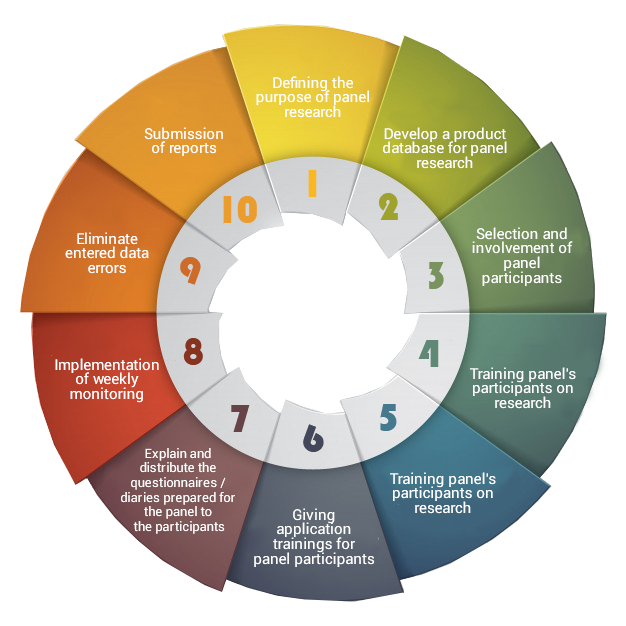Panel Researches
Panel surveys are surveys that collect / obtain information from the same sample each time the survey is repeated. Panel research is useful when trying to detect the dynamics of change.
The panels are in a multi-client research group. The consumer panel is a research method based on the regular collection of consumption trends from a sustainable and representative sample.
Continuous research allows you to follow the whole process in the market, not as a “photo” moment, but as a “movie”. In other words, the panels are prepared regularly and periodically, providing continuous information about the product group and the market under research. The work carried out by the questionnaire method provides information only about the survey period;
Because the panel results are based on product groups and brands, they provide companies with information about their brands, as well as competitor brands and the general state of the market.
Panels are not research for a single client, research results can be put into a report form based on product groups and sold to many companies interested in the results. Panel research differs from all other researches with this feature.

In panel surveys, hotels, restaurants, and hairdressers, referred to as target households, families or large consumers, can be included in consumer panels.
In consumer panels, participants are asked to use a form / diary for a specific period. In other words, inside the panel, product purchase, brand, quantity, packaging type, price, point of purchase, and so on the information is recorded on the form on the day of purchase. It reduces daily use errors and confusion that can result from forgetfulness. To minimize errors, consumers who participate in the off-board panel are trained and the records are checked regularly before and after the data is entered into the computer.
It is possible to find answers to the following topics through consumer panel research:
- What product / brand do the consumers buy,
- How much of this product they buy,
- How much money do they spend on this product,
- Purchase frequency,
- Where and when they bought this product
- Consumers’ reactions to promotions in the market,
- …
